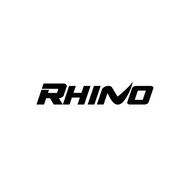Light Trails Motion Time-lapse | RŌV Pro

What you will need.
In order to pull this shot off, you will need a few important pieces of gear. Without one of these, it will be much more difficult to nail the shot.

Camera Body
In this video, we are using the Sony a7iii mirrorless full-frame camera.

RŌV Pro Camera Slider
You will need RŌV Pro and not RŌV Mobile. The pro model is has the shutter release cable port.

Shutter Release Cable
This cable will allow RŌV Pro to connect and communicate with your camera.

Tripod
You definitely cannot pull this shot off hand-held. You will need the camera and slider to be absolutely still to get a clean shot.

ND Filter
When shooting at a slower shutter speed you will notice that your shots will be super bright, the ND filter cuts out the excess light. We use PolarPro filters.

Wide Angle Lens
While this isn't crucial, having a wide angle lens really helps with showing the location. This is a Laowa 15mm f2 lens.
Step 1: Composition
Getting the proper composition is one of the most important steps. The reason composition is so important when using a slider is because you want to exaggerate the movement. In order to do this, you need foreground. Or some sort of blurred object in front of the camera aside from the actual view. For example, if you reveal past a pole, you'll be able to see the pole move out of frame by the end of the move. However, if you don't use foreground, it will be difficult to tell if the shot is actually sliding or not.

Step 2: Setting Up Camera
When setting up your camera, its important to remember you put your camera in manual mode instead of video mode. Once you are in manual mode, slow your shutter past 30 seconds. This will put it in BULB mode. Bulb mode means that the camera will allow an external source to trigger/control the camera. Another few things to keep in mind are ND filters and lens. You will notice your image getting very bright when you slow down your shutter speed. The ND filter will compensate for the extra light. We like to use wide angle lenses because it will help show the full location and exaggerate the movement. Remember to put your focus to MANUAL not auto focus. You don't want your camera hunting for focus in a middle of a time-lapse.



Step 3: Setting Up RŌV Pro
This is a probably the most simple step in the entire process. Setting up RŌV Pro could not be any easier when time-lapsing. Remember, you want to mount the slider onto a tripod for stability. You cannot pull this shot off hand-held or by holding the camera still. After you've mounted your camera, plug in the shutter release cable from RŌV Pro into the proper port on your camera. You will notice that the blue light is blinking. That means the slider needs to be connected to a mobile device. Take out your phone and launch the RŌV Motion app. Simply tap connect on your phone and you'll notice the blue light no longer blinking.

Step 4: Time-lapse Settings
The interface for RŌV Motion was designed to be simple and easy to use. You will first want to tap 'Live Motion' at the top and select 'Time-Lapse' instead. Once you are in the time-lapse settings we recommend that you choose a shutter speed between 3-8 seconds. This will allow you to get those awesome light streaks/trails in your image. Depending on how long you want the playback clip to be, set your duration accordingly. For us, we set our clip length to 4 seconds and duration to 15 minutes. You want to have around 100-120 shots and a 9 second interval with these settings. After you set your parameters, you hit start, and you let RŌV do all the work for you!




If you have any questions regarding gear or capturing time-lapses using RŌV Pro, please reach out to us at support@rhinocg.com






